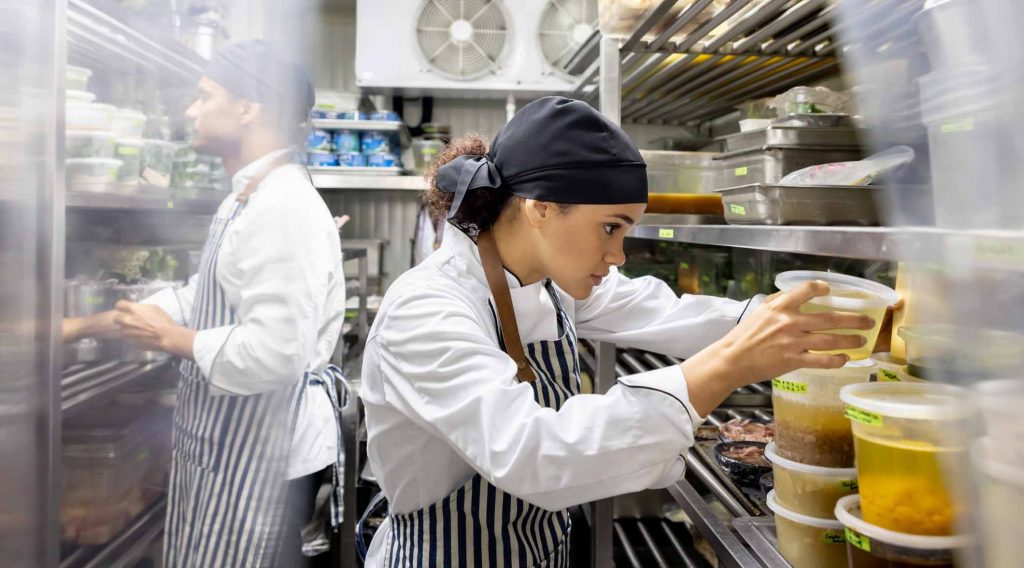
All around the world, the volume of cash transactions is falling. Card payments are on the rise and technology that enables payment by phone is helping to make non-cash payments more convenient. The question is whether this trend will ultimately signal the end of cash.
According to the World Payments Report 2018, global non-cash transactions grew at 10.1% to reach $482.6bn during 2016. Both developing and mature markets are expected to boost the global growth rate of non-cash transactions in the next few years, and emerging markets that now account for about one-third of global non-cash volume are expected to account for nearly half in 2021.
This growth is fuelled by online shopping, the advance of mobile payments technology, emerging markets promoting financial inclusion, and a growing familiarity with Bitcoin and other virtual currencies. In the retail market, Amazon Go is promoting a checkout-free, real-world shopping experience. With its “Just Walk Out Shopping ” process, customers use the Amazon Go app to enter the store, take the products they want from the shelves and leave, with the goods charged to their Amazon account.
In Asia, Singapore has a goal of reducing the use of cash and cutting ATM withdrawals by 20% in 2020. In China, a growing number of shops and restaurants are considering only accepting smartphone payment services such as Alipay, while fresh food retailer Hema – owned by the Alibaba Group – only accepts Alipay payment.
In Europe, Sweden sees only 2% of the total value of transactions accounted for by cash, and that number is steadily falling. In the US, too, where restaurant industry sales reached a record high of $863bn in 2018 according to the National Restaurant Association (NRA), more restaurants have stopped taking cash, including Daily Provisions, Martina and Caffe Marchio. Meanwhile more than 60 outlets of fast-casual chain Sweetgreen are set to go cashless.
Convenience is a key driver for businesses moving away from cash, with POS systems making card and phone payments quick and easy, while others seek to eliminate the cost of keeping and transporting cash or want to reduce the risk of robberies to protect their revenue and their employees.
For some businesses, it is just part of a strategy of preparing for future, or essential to innovative operational processes, but the move is far from being a foregone conclusion.
“I have not had a client go completely cashless yet,” says FCSI associate Jay Bandy of Goliath Consulting Group based in Georgia, US. “I have talked to people about it, but they haven’t done it because they feel the downside outweighs the advantages.”
“Most people who choose to go cashless do it for financial and safety reasons,” he adds. “In the fast casual or QSR sector, operators also want to save vital seconds per transaction. They want to speed people through the line. The disadvantage is that you are holding back a portion of your potential customer base. It could be a small percentage, depending on the demographic, or it could be 10-15% of your sales.”
Tossing out cash
One food retail chain that went cashless for purely operational reasons is UK outfit Tossed. The London-based chain of fast-casual healthy-eating outlets made the move three years ago and it relies on proprietary self-service kiosks – developed with pointOne EPOS – instead of manned tills. Customers choose their meals through a touchscreen menu and pay with credit or debit card, contactless, or Apple Pay.
The key driver was to redesign the operational flow of the business, making the speed and capacity of the restaurants fit with its offering of freshly prepared food. Since making the change, the response from customers has been very positive.
“We are a made-to-order healthy food business,” says Neil Sebba, business development director at Tossed. “We used to have grab-and-go stations, but the made-to-order piece was what made us different. Technology had moved to the point where we could install service points to order from and we were the first to do that. Customers can browse the menu at their leisure, and we can put all of our labour resource into making the food.
“It took two years from concept to the trial of cashless, during which contactless payment went berserk,” he adds. “Transport led the way, so it was no big deal moving away from cash. It has led to a fundamental change in our operational flow and that is the reason we did it, not the other things that people mention such as preventing robberies or not transporting cash. The number of people wanting to pay cash has dwindled rapidly, so we don’t lose many customers.”
Simplifying the revenue stream
The positive experience at Tossed led the owners to acquire the Vital Ingredient chain, which operates made-to-order salad and soup bars in London, and within a few weeks they had taken cash out of that business, too. “It is fun to be the first to go cashless, but it is a by-product of what we wanted to do operationally,” says Sebba. “We are not surprised that people are following suit. It simplifies the revenue stream. I have some nostalgia for cash, but the changes to our operations made it impossible to take cash and we can’t go back.”
The operational drive to going cashless could be the motivator for more restaurants to do the same, as business strategy may ultimately demand it, and consultants are well aware that this could become a strong trend.
“Everything is going cashless now,” says Chris Stern FCSI, managing director of Stern Consultancy in the UK. “Order and pay at the table capability has been around for a while and is an expected part of many businesses. In fast casual we are there already, and it will only grow. Many businesses are not far off stopping accepting cash. Who pays in cash for anything over £20? We are moving towards a society in which carrying cash is unusual,” he adds. “I see it happening in the food at work and higher education sectors, where clients are asking whether they should bother to take cash. Going cashless increases speed and profit. People are less aware of what they are spending if they are not using cash, so they spend more, which counteracts the fees charged for card transactions.”
The US pushes back on cashless
Half of all adults in the US visit a restaurant daily. It is a huge market where innovation is rife, and more restaurants are experimenting with going cashless. “Technology is rapidly being integrated across a variety of segments,” says Hudson Riehle, senior vice president in the National Restaurant Association’s Research & Knowledge Group. “Patrons are willing to use technology to increase the speed of service, convenience and the correctness of their orders. Technology improves convenience, especially in the payments area. So, more restaurants are going cashless, but it is nowhere near mainstream. Our research shows that 65% of patrons were likely to still use a restaurant if it went cashless – that number rises to 75% among Millennials – and only 32% would not.”
In Philadelphia, however, going cashless is no longer an option. From July, it will be the first US city to ban cashless stores and restaurants. Similar moves may be made in New York, where a City Council member wants to outlaw cashless restaurants, and New Jersey is considering similar legislation. The state of Massachusetts has, since the 1970s, imposed a law requiring cash to be an accepted form of payment.
The value of convenience
The reasoning behind these laws is that not accepting cash discriminates against customers on the basis of class, as low- income workers may not be able to use cards linked to a bank account. Young people, who may not have cards, may also be forced out of some establishments. “People are taking a stand on the grounds of discrimination by class or even racial profiling,” says Bandy. “Some big-name companies, such as Danny Meyer’s restaurants in the Union Square Hospitality Group, went cashless, but have had to pull back because they were alienating their customer base and facing social pressure.”
“Philadelphia and Massachusetts are the exceptions, for now,” says Riehle. “But growth in the industry over the last 10 years has been driven by the off-premises market – 63% of traffic is now take-out, delivery, drive-through, food trucks and so on – so convenience is valued even more. Addressing the payment option will be noticed in that market. So, we could see cashless in specific sectors of the market, especially those that cater to a certain demographic.”
The US is not alone in pushing back against cashless. The People’s Bank of China, for instance, announced a crackdown last summer against retailers that refuse to accept cash, prompting some to install cash registers.
“It is a fact that society is using cash less, and some businesses are willing to take the risk of leading the charge,” notes Bandy. “It will have an impact on how restaurants and bars take orders and what the terminals will look like. But I think it will be at least 10 years before we see a major move towards cashless, even though phone payments are popular now and moving to 5G will enable faster transactions by phone. We will move towards cashless over time, but now it is a battleground.”
“The world is changing,” argues Stern. “People expect to just wave and pay now. Everything is going cashless. It is just the world in which we live, and we are well down that road.”
As Riehle points out, younger generations are not deterred by restaurants going cashless, and the experience of Tossed suggests that operational concerns may fuel the removal of cash from some segments of the market. It seems there will be an inexorable move towards cashless restaurants, but cash is not dead yet.
Jim Banks




